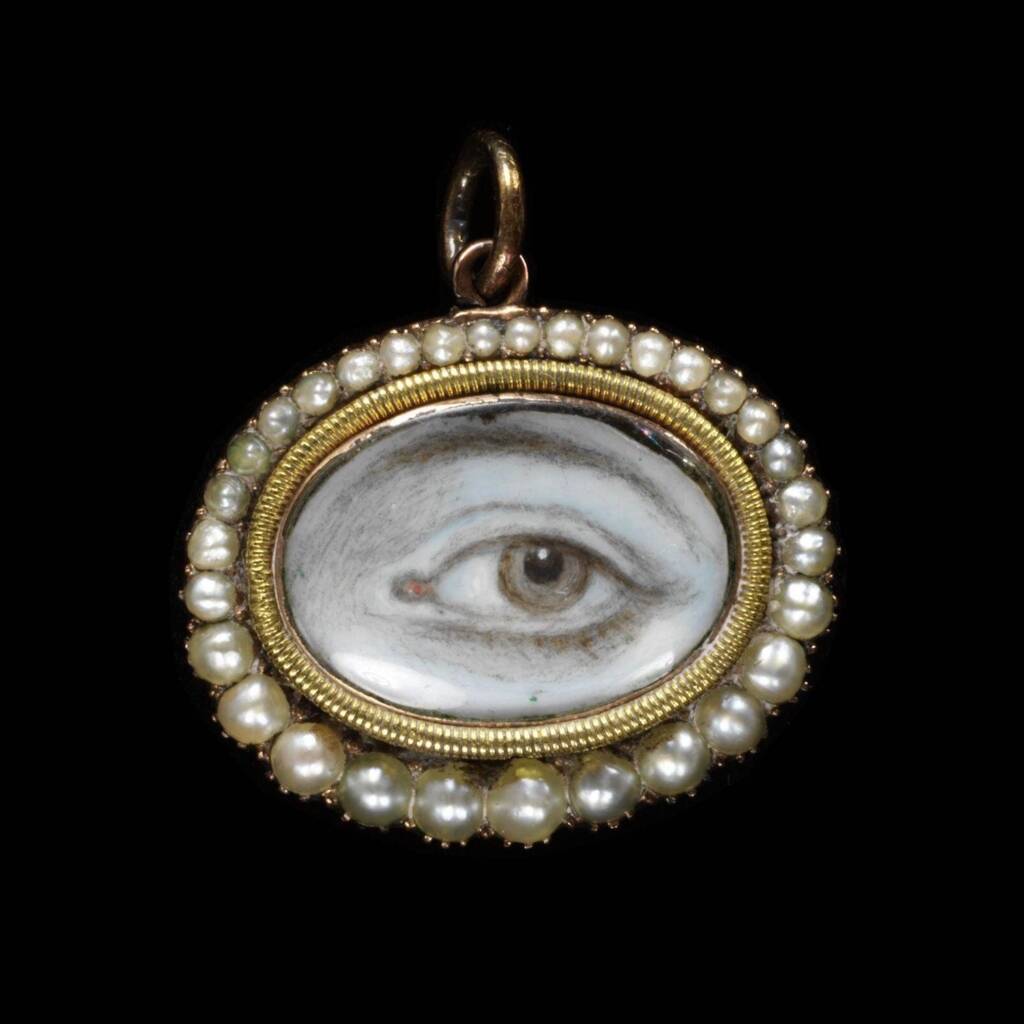Writing by Georgia Ketels // image from Victoria & Albert Museum
 I have always been fascinated by Victorian-era mourning practices and the complex rules that dictated how one correctly moved through their grief. The death of Prince Albert in 1861 left Queen Victoria in mourning for the remaining 40 years of her life, which had a heavy influence on Victorian British society.
I have always been fascinated by Victorian-era mourning practices and the complex rules that dictated how one correctly moved through their grief. The death of Prince Albert in 1861 left Queen Victoria in mourning for the remaining 40 years of her life, which had a heavy influence on Victorian British society.
Reflecting Victoria’s custom, women would mourn a great loss for two years, marked by their clothing. The initial ‘deep mourning’ period featured heavy, concealing veils and black silk crepe. Later, a wearer could introduce black lace, jet beads and white trims. In the final six months of ‘half mourning’, lilac, silver and grey could be worn, and then ordinary dress would resume. Men would mourn for a much less restrictive period of three months, wearing mourning suits, or simply black cuffs, hat-bands (called ‘weepers’), cravats, gloves or armbands.
Many other customs surrounded death: portraits, sketches and lithographs may be taken of the person in mourning or the deceased on their deathbed. Relics might be made out of shells, feathers, dried flowers or embroidery. Door knobs were draped with black crepe, curtains and blinds drawn, door bells were muffled, black wreaths were hung, and clocks were stopped.
Most fascinating to me, though it was not a universal practice, are the Memento Mori created of the deceased’s hair, photographs, likeness, even teeth and glass eyes – often turned into wearable art and jewellery. I find these to be very tender, precious items: unique, possibly strange, but very personal.
 While I believe that every person has a right to mourn in their own way, and in their own time, I am drawn to the regimented system of mourning in Victorian society for four reasons:
While I believe that every person has a right to mourn in their own way, and in their own time, I am drawn to the regimented system of mourning in Victorian society for four reasons:
- It brings the intangible feelings of grief into the real world, into a memento that you can see and feel. In this way, it feels contained.
- It tells you what to do, in a time when even small decisions are difficult to make.
- It gives a container of time to process. This makes it okay to both be stuck in the depths of mourning, and to come out of it and move on.
- It telegraphs your state of grief, even to strangers: without even knowing you, one can understand exactly how fresh and deep your grief is.
This physicality and system inspired my play, Recollection, in which a mother attempts to recreate the scent of her deceased teenage daughter as a perfume.
To do this, Olivia visits a modern, bespoke laboratory, wherein a chemist helps her gather the items her daughter owned, remember them, think about them, literally process them. Each item is a small piece of the complex, living scent of the girl, Molly. When Olivia thinks she’s given everything she can, the scent is simply not right – what is she missing?
In the play, we also see the past, where Molly falls in love with another girl, Jenna. Olivia’s task is to come to terms with this girl, Jenna, and everything she didn’t realise her daughter was.
Ultimately, this perfume is not the true key to Olivia being released from the deepest part of her mourning, but the process of it is essential to keeping her together in the hardest moments – by giving her a quest, she can heal, and love her daughter more than ever.
Although I don’t think we should return to a prescriptive societal system of mourning, I am touched by the way people physically move through loss – keeping their cat’s whiskers, saving their voicemails, re-making their loved ones’ recipes. I think it’s a wonderfully human way to realise just how alive love is.
Recollection premieres at fortyfivedownstairs 26 June – 7 July, 2024.






